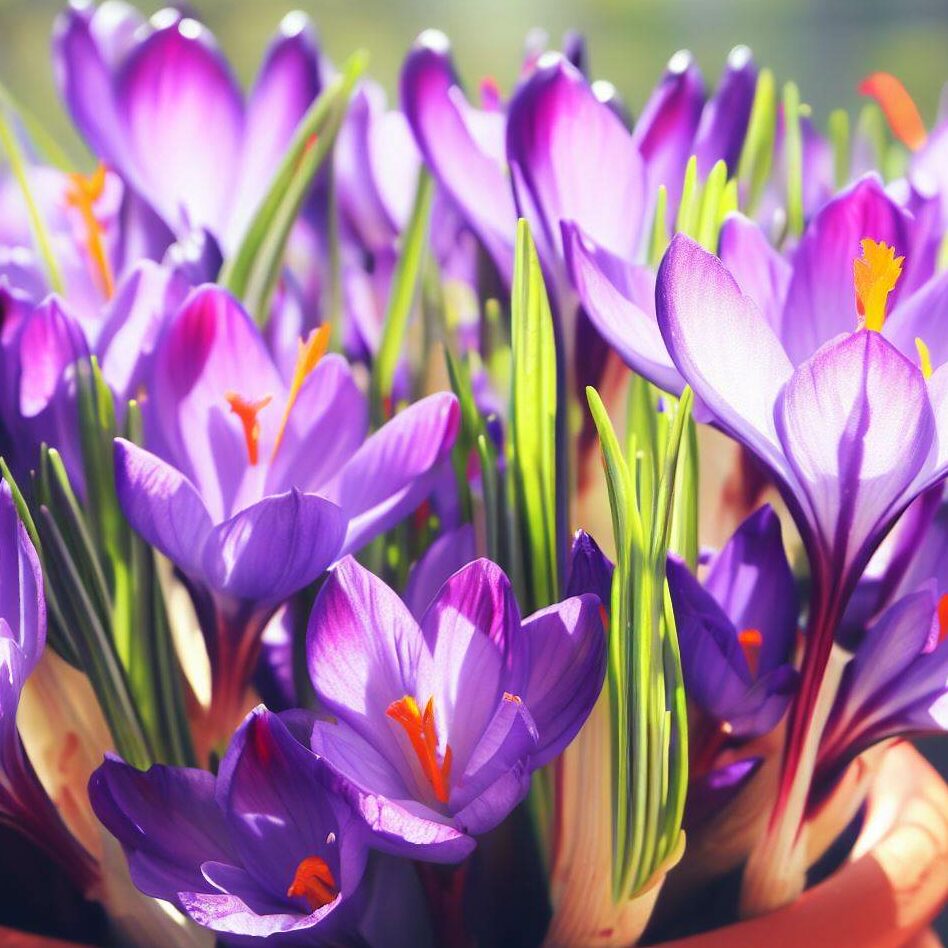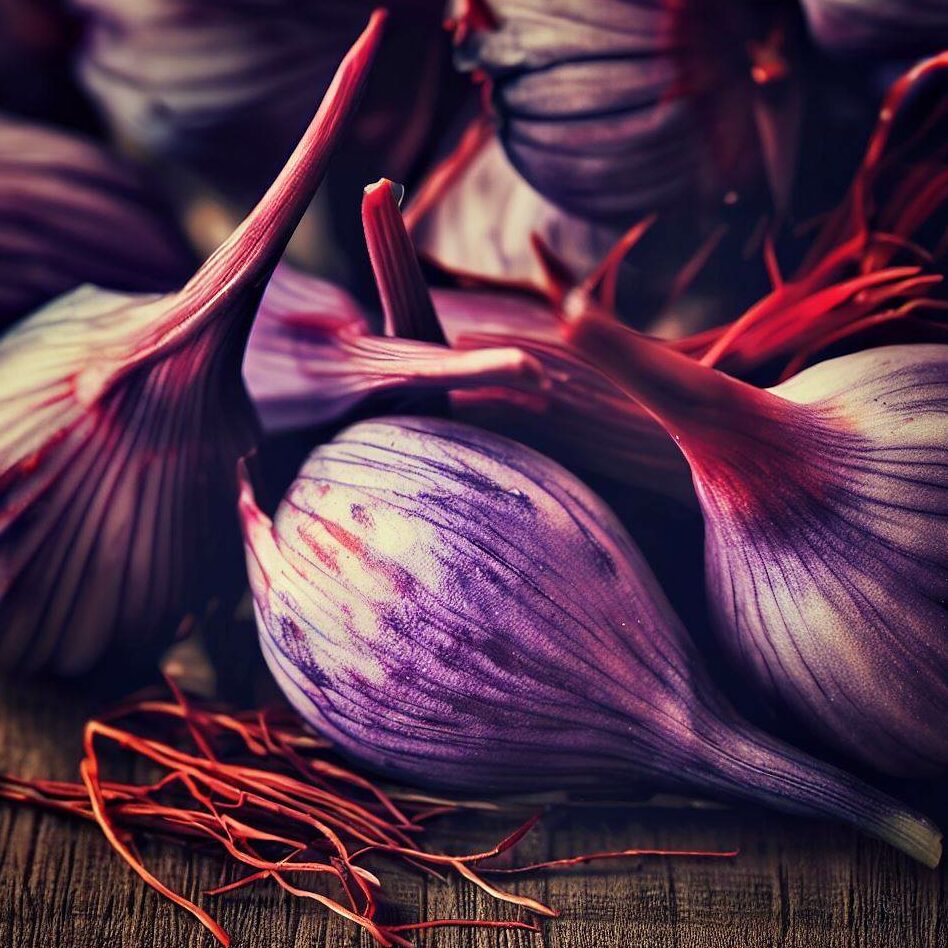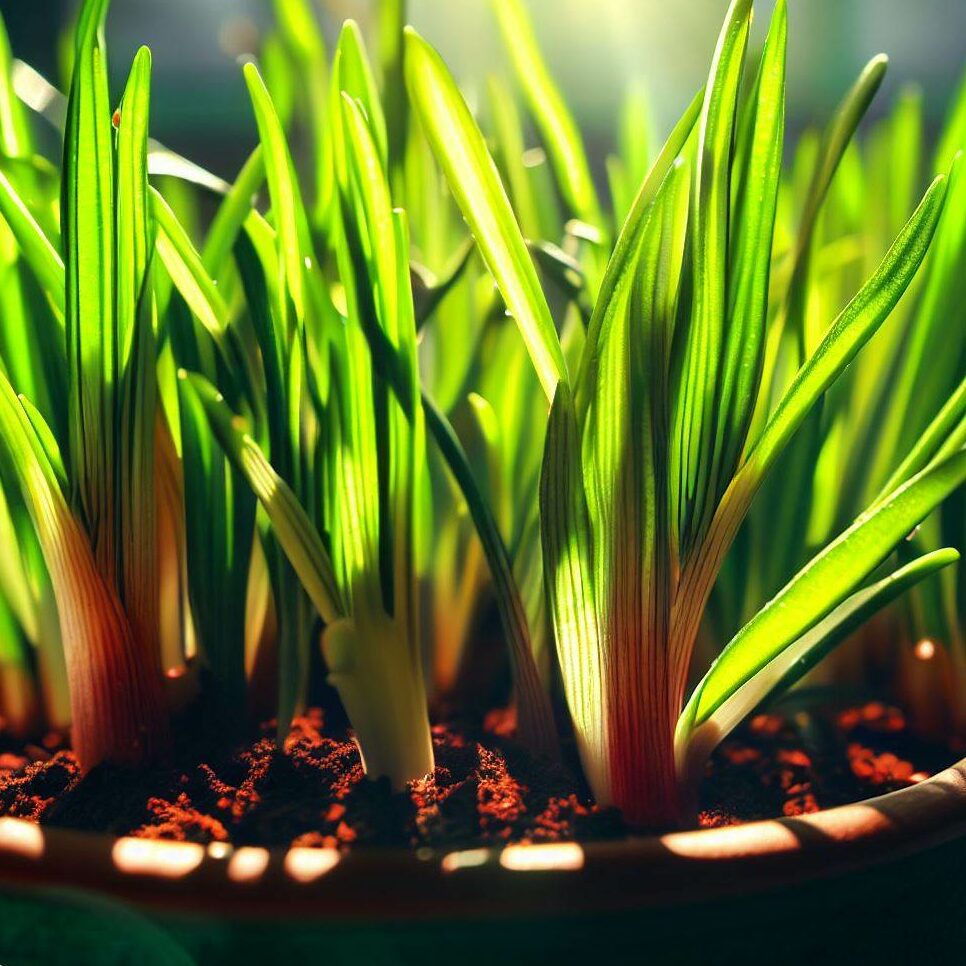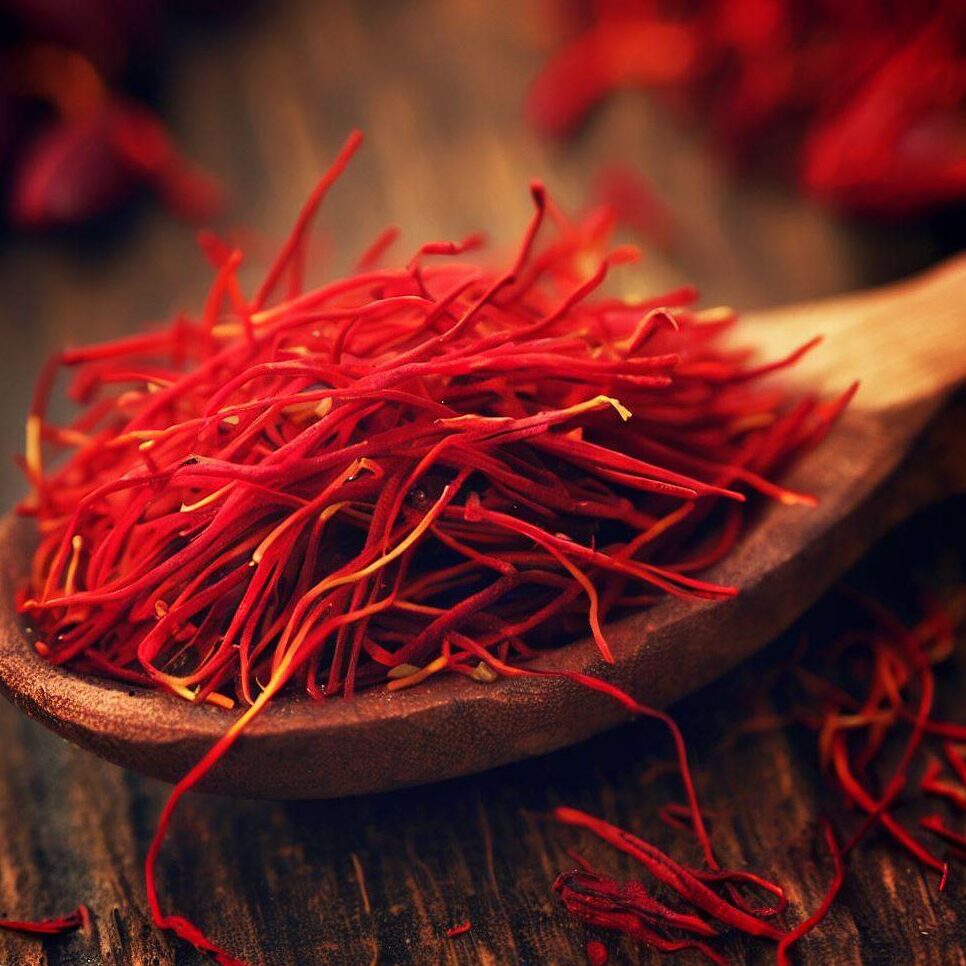Welcome to the world of saffron, a spice that doesn’t grow on trees but holds an extraordinary value. Revered for its unique flavor, vibrant color, and medicinal properties, saffron is often referred to as ‘Red Gold’ due to its high price in the market. But did you know that you can grow this precious spice right in your home, in a pot?
How to plant saffron bulbs in pots: Start by selecting a large container with adequate drainage holes and fill it with good quality, well-draining soil. Choose high-quality saffron bulbs and plant them about 2-3 inches (5-8 cm) deep and 3 inches (8 cm) apart, with their pointy ends up. Water the soil well once after planting. Place the pot in a warm, sunny spot where the plants will receive at least five hours of sunlight daily. Water the soil regularly, but avoid overwatering as saffron bulbs can rot in wet soil. Wait 6-8 weeks for the flowers to bloom. After blooming, don’t cut off the foliage. Leave it until it’s completely withered and yellow, then remove. Remember, the best time to plant saffron crocus bulbs is in early fall.

In this article, we’ll guide you through the process of planting saffron bulbs in pots. From selecting the right bulbs, preparing the pots, to caring for the growing plants and finally, harvesting your very own saffron. We’ll also answer some common questions about planting saffron and provide handy tips to ensure your saffron gardening journey is a success.
🌾Saffron Secret: Saffron gardening is not just about growing a valuable spice. It’s also a therapeutic activity that can bring joy and satisfaction. So, let’s embark on this exciting journey together! 🌾
Why Plant Saffron in Pots?
Planting saffron in pots offers a host of benefits. For starters, it allows you to control the growing environment of the saffron crocus more effectively. You can easily regulate the soil type, water, and sunlight exposure, which are crucial for the growth of saffron. Plus, pots make it possible to grow saffron even if you don’t have a garden or live in a region with a non-ideal climate for saffron cultivation.
Can Saffron Be Planted in Pots?
Yes, absolutely! Saffron crocus bulbs thrive in pots. In fact, container gardening can be an excellent way to grow saffron, especially for beginners. It allows for easier monitoring and care of the plants, and you can move the pots indoors during harsh weather conditions.
🌾Saffron Secret: Choose a pot that’s at least 10 inches deep to accommodate the saffron bulbs and allow for proper root development. 🌾
Choosing the Right Saffron Bulbs
The success of your saffron gardening journey begins with selecting high-quality saffron bulbs. The bulbs, also known as corms, are the foundation of your saffron plants. Choosing healthy, disease-free bulbs is crucial as it directly impacts the growth and yield of your saffron.
Finding Saffron Bulbs for Sale
So, where can you find saffron bulbs for sale? Reliable garden centers and online gardening stores often carry saffron bulbs. Make sure to choose a reputable seller to ensure the quality of the bulbs. It’s also a good idea to check customer reviews and ratings before making a purchase.

Storing Saffron Bulbs Before Planting
Once you’ve got your saffron bulbs, it’s important to store them properly before planting. Keep them in a cool, dry place away from direct sunlight. Avoid storing them in airtight containers as this can lead to moisture build-up and potential rot.
🌾 Saffron Secret: When selecting saffron bulbs, look for ones that are plump and firm. Avoid bulbs that are soft, shriveled, or show signs of mold or rot. 🌾
Preparing the Pots
Before you start planting, it’s essential to prepare your pots properly. This involves choosing the right pot and soil, and ensuring adequate drainage.
Choosing the Right Pot and Soil
When it comes to choosing a pot for your saffron bulbs, size matters. Opt for a large container that’s at least 10 inches deep to allow for proper root development. The pot should also be wide enough to accommodate multiple bulbs planted about 3 inches apart.
As for the soil, saffron crocus prefers well-draining soil. A mix of garden soil and compost or well-rotted manure works well. You can also add some sand or perlite to improve drainage.
The Importance of Drainage
Good drainage is crucial when growing saffron in pots. Saffron bulbs can rot in waterlogged soil, so it’s important to ensure excess water can easily drain away. Choose pots with adequate drainage holes at the bottom and consider placing a layer of gravel or broken pottery pieces at the bottom of the pot to further enhance drainage.
🌾 Saffron Secret: If your pot doesn’t have drainage holes, you can drill some yourself using a drill bit designed for ceramics. 🌾
Planting the Saffron Bulbs
Now that your pots are ready, it’s time to plant the saffron crocus bulbs. Here’s a step-by-step guide on how to do it:
- Prepare the Soil: Fill your pot with the prepared soil mix, leaving about 3 inches from the top.
- Position the Bulbs: Place the saffron crocus bulbs about 2-3 inches deep in the soil with their pointy ends up. Ensure the bulbs are spaced about 3 inches apart. If space is limited, you can place them closer, but they should never touch.
- Cover the Bulbs: Cover the bulbs with the remaining soil. The top of the bulbs should be just below the soil surface.
- Water Well: After planting, water the soil well. The soil should be moist but not waterlogged.
What is the Best Way to Plant Saffron Bulbs?
The best way to plant saffron bulbs is in the fall, specifically in September or October. However, if you missed the fall planting, don’t worry. Can you plant saffron in spring? Yes, you can, but keep in mind that the flowers might not bloom until the following fall.
Remember, saffron crocus bulbs prefer a sunny location and well-draining soil. They also need a period of winter chill for successful blooming. So, if you live in a region with mild winters, planting in pots allows you to move the pots to a cooler location if necessary.
🌾 Saffron Secret: Label your pot with the planting date and variety of the saffron crocus bulbs. This can help you keep track of the growth progress and blooming period. 🌾

Caring for the Growing Plants
Once the saffron bulbs are planted, the next step is to care for the growing plants. Proper care is crucial to ensure healthy growth and a good saffron yield.
Watering and Sunlight Requirements
Saffron plants need regular watering, but it’s important to avoid overwatering. The soil should be kept moist but not waterlogged. A good rule of thumb is to water the plants when the top inch of soil feels dry to the touch.
As for sunlight, saffron plants love the sun. They need at least five hours of sunlight daily. So, make sure to place your pots in a location where they can get plenty of sunshine. If you’re growing saffron indoors, you might need to use grow lights to supplement natural light.
Preventing Saffron Bulbs from Rotting
One of the main challenges when growing saffron is preventing the bulbs from rotting. Overwatering and poor drainage are the main culprits. To prevent this, ensure your pots have adequate drainage holes and the soil is well-draining. Also, be mindful not to overwater the plants. Remember, it’s better to underwater than overwater when it comes to saffron.
🌾 Saffron Secret: If you live in a region with heavy rainfall, consider moving your pots under a shelter to prevent waterlogging during the rainy season. 🌾
Harvesting the Saffron
After weeks of caring for your saffron plants, it’s finally time to harvest the fruits of your labor. But when and how do you harvest saffron?
When to Harvest Saffron
Saffron is harvested in the fall, usually about 6-8 weeks after planting. The best time to harvest is when the flowers are fully open, typically in the morning. You’ll know it’s time to harvest when you see the bright red stigmas (the saffron threads) protruding from the flowers.
How to Harvest Saffron
Harvesting saffron is a delicate process. Using your fingers, gently pluck the red stigmas from the flowers. It’s best to do this early in the morning when the flowers are still closed to protect the delicate stigmas.
Keep in mind that saffron is a labor-intensive crop. It takes around 150 flowers to produce just one gram of saffron. But don’t let this discourage you. The joy of harvesting your own saffron is well worth the effort!
🌾 Saffron Secret: After harvesting, dry the saffron stigmas in a warm, dry place for a few days before storing them. This helps to preserve their flavor and aroma. 🌾

Propagating Saffron Crocus
Once you’ve successfully grown and harvested your first batch of saffron, you might be wondering, “Do saffron bulbs multiply?” The answer is yes! Saffron crocus bulbs can be propagated to increase your saffron yield in the next growing season.
Propagating Saffron Bulbs
Saffron crocus bulbs multiply by forming little offsets or daughter bulbs around the base of the parent bulb. These can be separated and planted to produce new plants. Here’s how:
- Wait for the Right Time: The best time to propagate saffron bulbs is in the summer when the plants are dormant.
- Remove the Bulbs: Carefully dig up the saffron bulbs from the soil.
- Separate the Bulbs: Gently separate the daughter bulbs from the parent bulb.
- Plant the Bulbs: Plant the separated bulbs in a pot or in the ground, following the same planting process as before.
What About Saffron Crocus Seeds?
While saffron crocus can technically be grown from seeds, it’s not the preferred method. Growing saffron from seeds is a long and complex process, and it can take several years before the plants are mature enough to produce flowers. Therefore, it’s much easier and faster to propagate saffron using bulbs.
🌾 Saffron Secret: When separating saffron bulbs, be sure to wear gloves to protect your hands from potential skin irritants on the bulb’s surface. 🌾
Conclusion
Planting saffron bulbs in pots is a rewarding endeavor that brings the exotic world of saffron right to your doorstep. From choosing the right saffron bulbs and preparing the pots, to caring for the growing plants and finally harvesting the precious saffron threads, each step is a journey of discovery and joy.
Remember, saffron doesn’t grow on trees, but with a little patience and care, it can flourish in your pots. So, why not give it a try? Embrace the challenge and experience the satisfaction of harvesting your own saffron. After all, nothing beats the taste of home-grown saffron in your favorite dishes.
So, are you ready to embark on your saffron growing journey? Let’s get those green thumbs working!
🌾 Saffron Secret: Keep a gardening journal to record your saffron growing journey. It’s a great way to track your progress and learn from your experiences. 🌾
